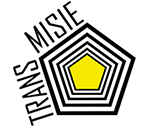Romualdas Pozerskis photography exhibition with multimedia presentation
In cooperation with the Art Gallery “Fojė” in Trakai
September 9, 2019 at 16:30, East Slovak Gallery
The Baltic Way was a peaceful political demonstration which took place on 23 August 1989 when approximately two million people joined their hands forming a 600 km long human chain through the Baltic countries, thus demonstrating their unity in their efforts towards freedom. In 1940 the Baltic states were occupied by the Soviet Union which had previously agreed upon it with Nazi Germany. The agreement was entered into on 23 August 1939 in Moscow and was entirely secret. This document is called the Hitler–Stalin Pact or the Molotov–Ribbentrop Pact (by the surnames of the signatories: the USSR Minister for Foreign Affairs Vyacheslav Molotov and the German Minister for Foreign Affairs Joachim von Ribbentrop). At the end of the 1980s the effects of the Molotov- Ribbentrop Pact were still sharply present in the Baltic states. The occupation continued but the USSR denied the existence of the Pact and continuously asserted that the Baltic states had voluntarily joined the Soviet Union. On 23 August 1989, the 50th anniversary of the Molotov-Ribbentrop Pact, the inhabitants of the three Baltic states demanded public acknowledgement of the Pact’s secret protocols and the renewal of the independence of the Baltic states. At 19:00 on 23 August 1989 approximately two million inhabitants of the Baltic states joined hands forming a human chain from Tallinn through Riga to Vilnius. The Baltic Way was organised by the national movements of the Baltic states: the Estonian Rahvarinne, the Latvian Popular front of Latvia and the Lithuanian Sajūdis. The participants gathered in the cities and villages where the campaign was to take place or drove to the less inhabited Baltic territories where the Baltic Way was to wind through. According to the news agency Reuters, the campaign gathered 700 000 people in Estonia, 500 000 in Latvia and 1 000 000 in Lithuania. According to the official information of the USSR provided by the news agency TASS, the campaign gathered 300 000 people from Estonia and 500 000 people from Lithuania. No information about the number of participants from Latvia was published. The exact number of participants cannot be determined due to the various information sources and the different number of participants in cities and rural areas. Solidarity demonstrations supporting the Baltic Way took place in Berlin, Leningrad, Moscow, Melbourne, Stockholm, Tbilisi, Toronto and elsewhere in the world. Since inclusion in the USSR in 1940, the inhabitants of the Baltic states were forced to live under the dictatorship of the Communist Party where freedom of thought and speech was restricted. In 1986 the Communist Party of the Soviet Union introduced the so-called openness policy in regard to environment protection matters and Stalinism crimes. Newlyformed public organisations started voicing their opinions and discontent about the existing situation more openly. The biggest achievement of the protest campaign was getting the USSR to give in to the joint protest of the inhabitants of the Baltic states and admit to all the past crimes. The USSR acknowledged the existence of the Molotov–Ribbentrop Pact and declared it invalid. It was one of the most important steps towards the renewal of independence in the Baltics. The Baltic Way proved that faith in democratic ideas unifies the inhabitants of the Baltic states. A sense of brotherhood, unity and a common goal strengthened by such a campaign became an important factor of political participation which led to the renewal of independence of the Baltic states.
Romualdas Pozerskis – Art photographer.
Born 1951 in Vilnius. 1969-1975 studied at Kaunas Polytechnic Institute (present Kaunas University of Technology). Since 1993 has given lectures on the history and aesthetics of photography at Vytautas Magnus University in Art history Departament. Since 2011 has been Professor at Vytautas Magnus University Faculty of Arts Department of Contemporary Art. Member of the Lithuanian Union of Art Photographers since 1976.
MAIN AWARDS:
1990 became the Winner of Lithuanian National Culture and Art Award, the highest prize for cultural achievements in Lithuania
2004 was presented in University of Vienna the Herder Prize of Alfred Toepfer Fundation from Hamburg, for his contribution to the fostering and preservation of Central and Eastern Europe’s cultural heritage
2005 The Cross of Knight of the Order “For the Merits to Lithuania”
2006 The “Golden Cross of Merit” from President of Poland Lech Kaczynki
2009 Balys Buračas Photography Art Award, Gold Medal of the 40th Anniversary of the Lithuanian Photographers Association.
2012 Silver medal for Merits of Vytautas Magnus University. Works owned by national museums, art galleries and private collectors in Lithuania and abroad (Modern Art Center, Vilnius ,Lithuania, National Gallery of Art, Vilnius ,Lithuania, Bibliotheque Nationale, Paris, France, Finnish Museum of Photography, Helsinki, Finland, FIAP Collection, Lozano, Switzerland, Haus der Fotografie, Burghausen, Germany, Ackland Art Museum, NC, USA and etc.)







